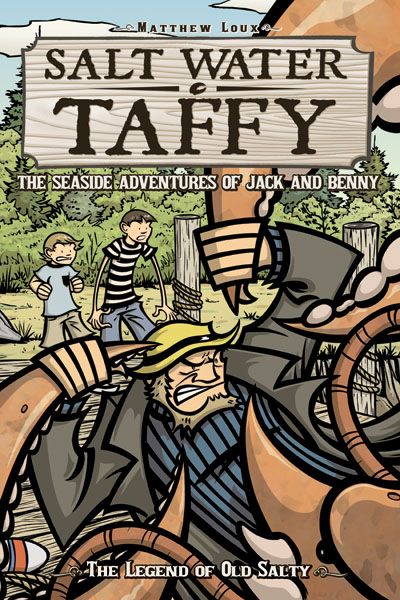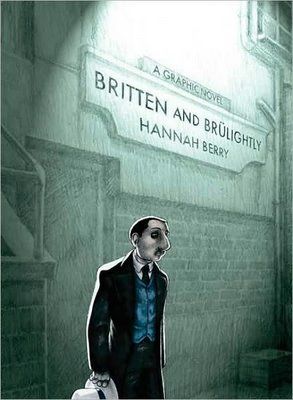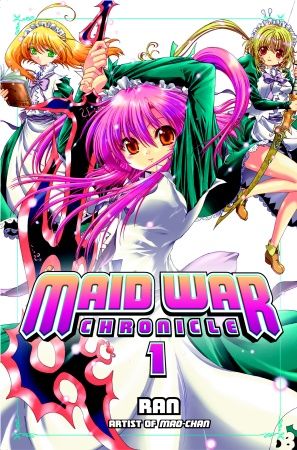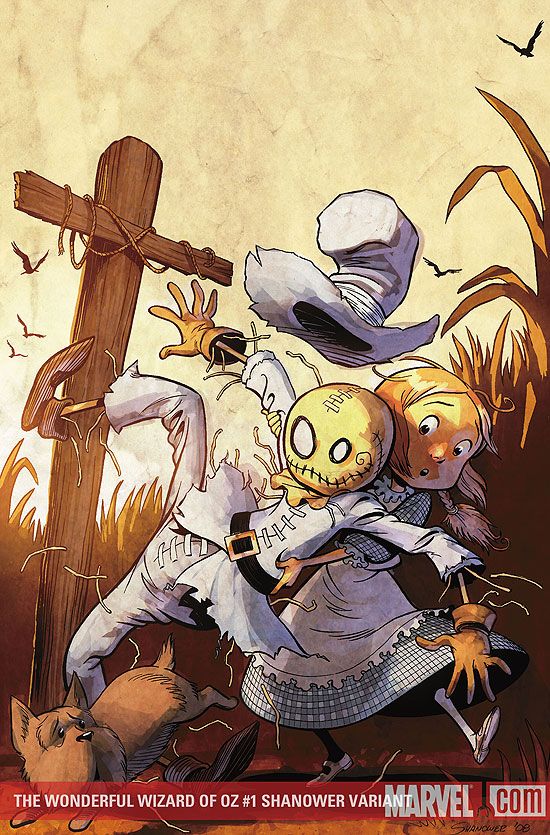Welcome to another edition of What Are You Reading. Our special guest this week is Katherine Dacey, a former contributor to Pop Culture Shock and current contributor to the Good Comics for Kids blog. She also is the driving force behind the impressive new blog, The Manga Critic.
To see what Katherine and other Robot 6ers have been reading lately, click on the link ...
Tim O'Shea: This week, I'm doing a great of research for upcoming Talking Comics with Tim subjects. First on the pile of fun reading was Matt Loux's Salt Water Taffy. What really caught my eye about Loux's storytelling approach is his penchant for framing a set of panels with a backdrop landscape shot. Maybe many artists do that, but his style and approach made me take notice. Plus I like it when an all ages story entertains me beyond the core plot level.
Months ago, when I interviewed John Arcudi, he spoke highly about the work of John Kerschbaum. In looking at his latest release from Fantagraphics, Petey & Pussy, I find myself bewildered and horrified at his style of comedy. A dog and a cat with human bald heads (and a love of alcohol), I imagine as I read the stories that Petey & Pussy have thick New York (Yawk) accents when they talk.
What I love most about library book sales is the opportunity to find treasures I might never run across otherwise. This weekend at the Oak Ridge (TN) Public Library Friends of the Library book sale, I discovered Audrey Niffenegger's 2006 graphic novel (classified by the author as "a novel in pictures") The Adventuress. Upon closer examination, while the book was published in 2006, Niffenegger made it
between 1983 and 1985--in a style that reminds me of Edward Gorey. It's interesting to look at this book and compare it to her 2004 style in the short story, The Night Bookmobile, which ran in webcomic installments at The Guardian in 2008.
In terms of blogs, Steve Duin has a new blog at the Oregonian, where he is showing readers more Matt Baker appreciation as well as the Paul Hornschemeier adaptation of Ted Kooser's poem, The Giant Slide.
Michael May: I'm halfway through Britten and Brulightly. People keep mistaking Britten - an Ecuadorian detective - for a Frenchman, which I think is kind of appropriate since I keep mistaking this for a French comic. That's a compliment, by the way. I love French comics except that I can't usually read them. Thankfully, creator Hannah Berry is English, so yay for me.
The art in this thing is gorgeous and touchingly captures the grey dreariness surrounding a man who usually makes a living uncovering evidence of cheating lovers. Britten is appropriately known in his professional circles as The Heartbreaker. It's a nickname that he despises almost as much as he deserves.
The awesome thing about the story (so far) is Britten's partner, whom the novel's back cover coyly describes as "unconventional." I'm spoiling nothing by telling you that Brulightly is, in fact, a teabag. That's revealed very early in the story and it's brilliant. What I don't know yet is whether Britten is insane, or if the teabag is possessed by something, or if it's just a talking teabag. That - as well as the wonderful murder mystery that forms the plot - is pulling my happily towards the end.
Chris Mautner: I read another new Del Rey manga, Maid War Chronicle. This one's about a snotty prince (only about eight or so, natch) who gets booted out of his throne by an invading country and only has his maids to protect him as he attempts to get his country back. Thankfully the maids, who are all named after spices and drinks (i.e. Cocoa, Mint, Vanilla, etc.), get endowed with magical weapons. Surprisingly, given its pandering nature, this isn't too distasteful a book, and the fan service is kept on a rather low simmer. Still, I'm not exactly eager to follow the continuing adventures of this clan.
I also came upon Michael Kupperman's Tales Designed to Thrizzle Vol. 1. Even though I've read most of this material in periodical form, it's still a joy to revisit Kupperman's absurd, hilarious universe.
In the "off the beaten path" aisle, I recently came across Certitude by Adam Begley, a collection of short biographies (like, one page) of folks who suffered from a large dose of monomania, like Ayn Rand and Gen. Custer. The real draw here is the art by Edward Sorel. His caricatures of folks like Madonna and Pope John Paul II are a thing of beauty.
Katherine Dacey: Topping my list is Yoshihiro Tatsumi’s A Drifting Life (Drawn & Quarterly). At the outset, I was skeptical: I’d found Abandon the Old in Tokyo and The Push Man so relentlessly grim that I wasn’t sure if I had the intestinal fortitude for a 840-page autobiography of their author. I’m astonished at how compelling Tatsumi’s story turned out to be, both for the insights it provided into his artistic and professional development, and for its frank depiction of life in post-war Japan.
I made another surprising discovery while reading A Drifting Life: manga makes an excellent vehicle for biography. Prose biographies seldom offer such an immersive experience, even when an author has gone to great pains to recreate pivotal moments in his subject’s life; if anything, I find these kind of details distracting, as few biographers have the storytelling chops to make them an organic part of the narrative. Robert Caro’s The Power Broker is a prime example of such more-is-more reportage, telling us exactly how warm it was and what Robert Moses was wearing every time Moses announced a new highway project or housing development. When I finished the book, I felt that Robert Moses had disappeared from view, his motives and beliefs obscured by the accretion of sartorial minutiae. In a graphic medium, however, it’s much easier to draw the reader into the scene; the very details that seem unnecessary in a prose biography give images a specificity that’s almost impossible to capture in words.
For my gig at Good Comics for Kids, I’ve been reading — and enjoying — Eric Shanower and Skottie Young’s take on The Wonderful Wizard of Oz (Marvel). Shanower has been living in the Oz universe for some time, and it shows: the script is faithful to both the spirit and the letter of Frank L. Baum’s original novel. Young’s art is the perfect compliment to Shanower’s script, bringing new personality to some very familiar characters. I’m particularly taken with the Tin Man, who’s rocking a ‘stache and a beetle brow, and the Cowardly Lion, who looks remarkably like the world’s largest Pomeranian.
I've also been reading a lot of manga for the under-twelve set. Most of it is very didactic -- "Hey kids, remember to play nice and believe in yourself!" -- but there have been a few standouts: Dinosaur Hour! (VIZ), which cheerfully ignores all recent scientific research vis-a-vis dinosaur intelligence and depicts them as dumber than dirt, with hilarious results; Leave it to PET! (VIZ), which sounds horrible - robot made from plastic bottle saves the boy who recycled him--but is actually subversive fun; and The Big Adventures of Majoko (UDON), which is a cute adventure story that imparts a grrrrl power lesson without talking down to young readers.






